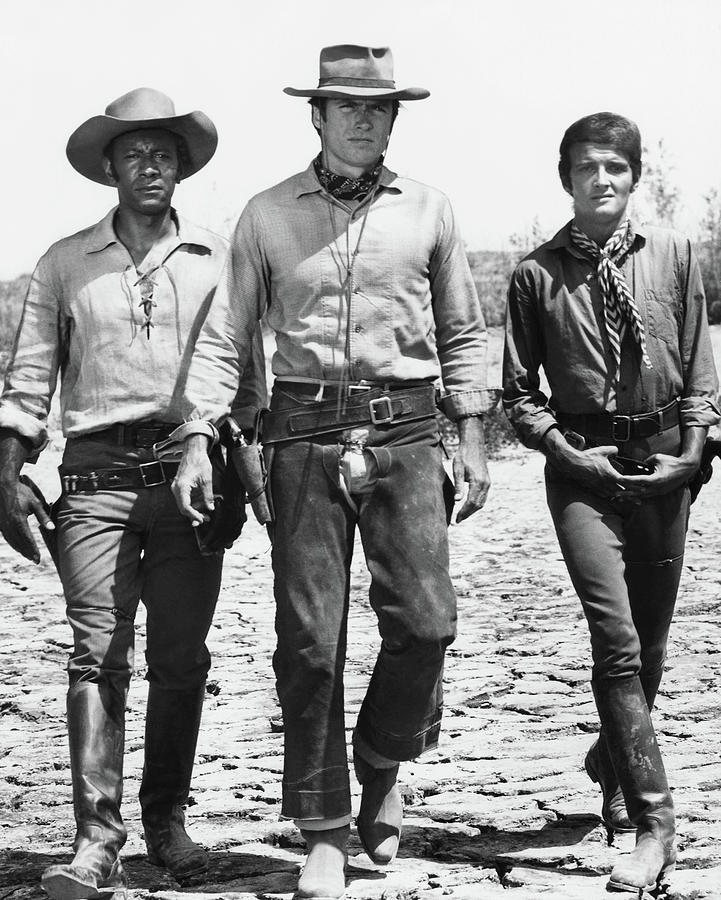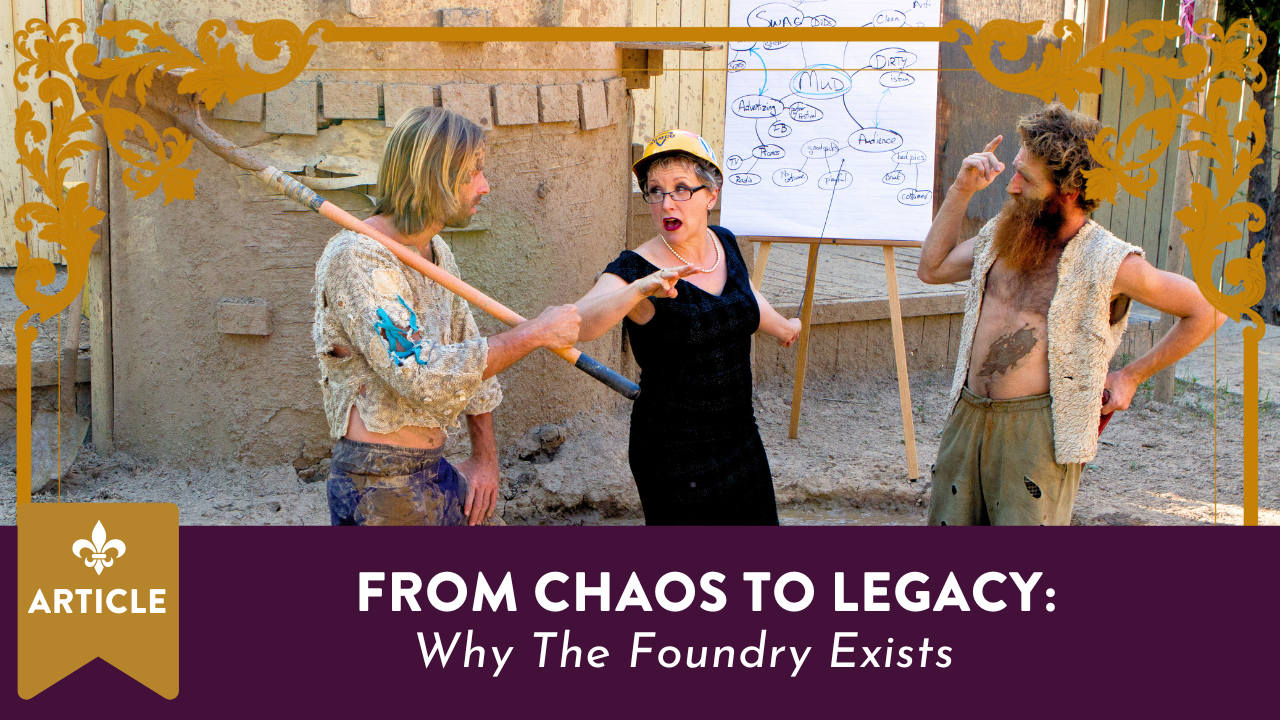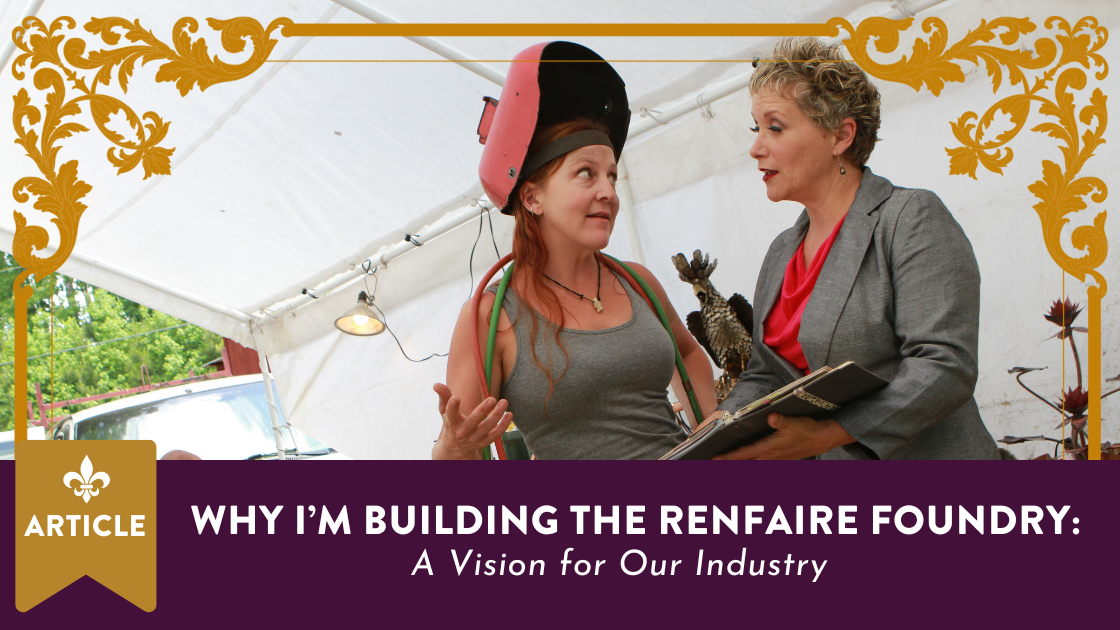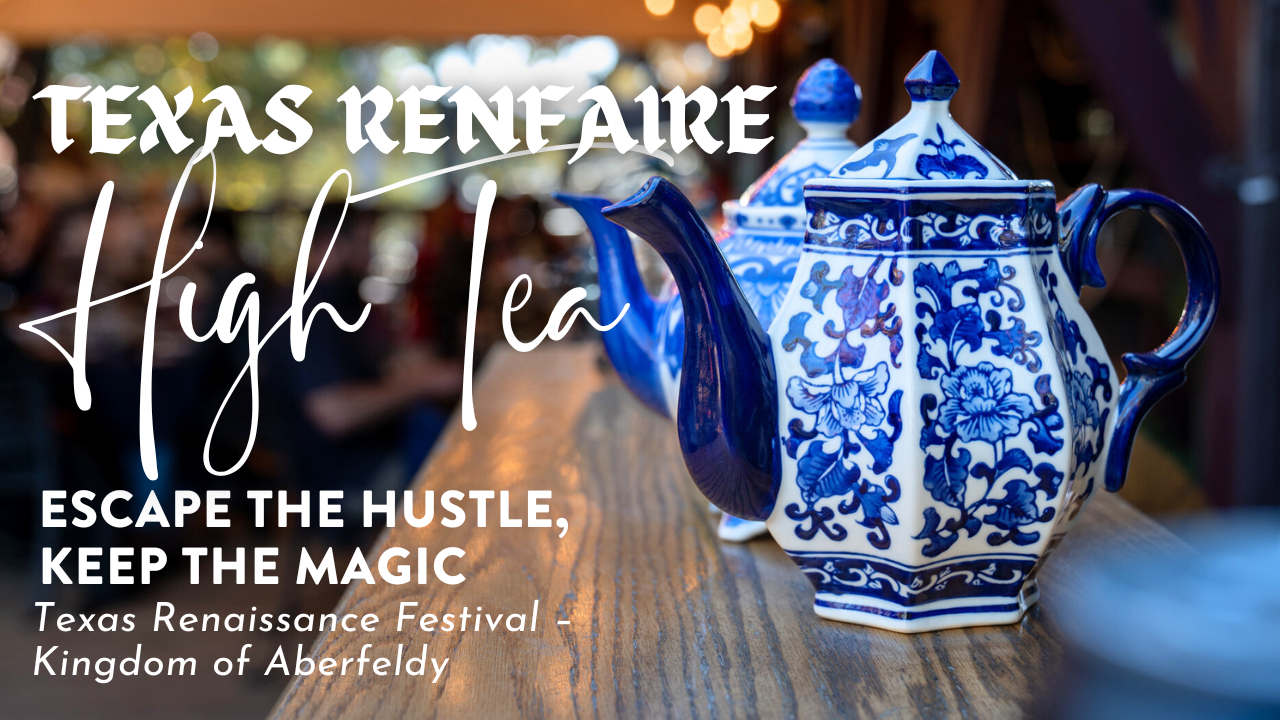
The cast of Rawhide.
The other night I was channel surfing and paused briefly on ‘Rawhide’, an old black & white weekly western series.
Wishbone was servin’ up the grub. Rowdy, Scarlet, Mister Favor, the whole gang was sitting around the campfire, eating beans off of metal plates and soaking up the sunset. I was there with them, out on the ol’ lone prairie enjoying the various shades of gray of the setting sun when I saw a boom mike hanging over Mister Favor’s head.
Gone was the sunset, gone were the drovers eating their beans, gone was the story line—all I could see was that boom mike.
It didn’t fit; it stuck out like sneakers on Shakespeare. It was such a small thing, but it had a such a huge effect—it turned Rowdy Yates into Clint Eastwood, Gil Favor into Eric Flemming, and the ol’ lone prairie into a back lot at CBS…
It destroyed the illusion, and instantly brought me back from the wide open spaces to the closed confines of my living room.
🎪For those of you who are new to the business, a themed festival is theater.
It is not a theater in the traditional sense, but it is a theater, just the same.
It is a 3-D, or ‘Interactive Theater’. In traditional theater the audience sits in a fixed position passively observing the action which also occurs in a fixed position (The stage or screen). The two are separated by what is known as “the fourth wall” an invisible, mutually agreed upon plane that will not be penetrated by either side.
Early experimental theater groups tried removing the fourth wall by having actors enter from the audience, or by delivering lines from the audience, who still sat in a fixed position and passively observed.
🎭Interactive theater, which is at the cutting edge of experimental theater, invites the audience onto the stage, invites them to participate, and entices them to play like children; to touch, talk, move and explore the stage with their own creativity and rediscover the child within themselves.
Think of your own childhood. If you ever had tea time with teddy bears, or made the winning basket for the NBA championship in your own back yard, you were involved in creative play.
If you’ve ever seen a patron with a beer in one hand, a turkey leg in the other, wearing cowboy boots, blue jeans, a Blake Shelton T- shirt, and a just purchased Jester’s hat hollering “HUZZAH!” instead of “HOT DAMN!” then, you have seen the effects of playfulness as well.
🎭At a themed festival the entire site is the stage, and all of those who work within its boundaries are the cast.
“Yeah, Yeah, so what does this have to do with me?, I’m trying to make a living here”
OK, fair enough question….I’ll answer it with another question:
👉🏼 If you give a child $10 and turn him loose in a toy store for the day, how much money will he return with? How about $20? How about $50 or $100? A child will always return with empty pockets—and so will an adult if they are wholly involved in creative play.
💰The economic restraints and controls that we as adults place upon ourselves lose much of their strength when we are focused upon play.
If you are not familiar with this concept, I would be happy to explain it over a few hands of poker at a casino of your choosing.
Now, back to the back lot at CBS…. as bad as that boom mike was, imagine instead that the drovers are sitting around the campfire, watching the sunset over the herd, eating beans with white plastic sporks off of Styrofoam plates, and drinking out of paper cups that say “Pepsi”.
When a Patron stands in front of a Renaissance Booth, manned by a person in costume, in their minds they are looking at the stage. If you have styro cups and plates, if you are eating with a spork, you have destroyed the illusion that you and every other business owner has spent thousands of dollars to create and the public has paid the price of an admission to experience. If the person in costume is eating out of a Styrofoam container it has the same effect as putting truck tires on Charlton Heston’s chariot in the big race scene in ‘Ben-Hur’. “Yeah, sure Al, but why, after spending all that money, why would they put truck tires on a chariot?”
My point exactly….
✨Maintaining the illusion is vital.
Not only is it the ‘Prime Directive”, if you will, of theater, It is also the essential ingredient that nurtures the necessary trust needed for adults to allow themselves to enter into creative play. And the mindset of creative play, as we earlier observed, makes a person more than willing to spend money they wouldn’t normally be more than willing to spend in pursuit of the pleasure of playful creation…..
The illusion is not created for the cast; it is created for the audience.
It is also created, in part, by the audience through their ability to skillfully suspend their disbelief.
👉🏼 Suspension of disbelief (another arcane theatrical term) occurs when one lays aside their analytical mind so they might be entertained.
For example, if I was watching Rawhide, and did not suspend my disbelief my internal dialogue would sound something like this “Everything is black white and gray, grass is green in the real world, I see the fire, but I don’t smell the smoke, how can it be dark already, it was noon five minutes ago, where is that music coming from, is there an orchestra in the chuck wagon?” etc.
We are all adept at suspending our disbelief. We can turn it off at the first sign of a commercial, make a sandwich, go to the bathroom, be back in the lazy-boy and turn it back on before the last commercial ends. To you, the flush toilets and Faire food containers are an anachronism; to the patron it’s a trip to the bathroom and kitchen during a commercial.
Let’s assume for a second that it’s OK to eat out of Styrofoam, it’s such a small thing, it really shouldn’t make that much difference (except to those craftspeople who sell eating & drinking utensils). How about jewelry, that’s small stuff, why not let everybody start wearing Wal-mart jewelry? That’s no big deal (except to those people who sell jewelry). And what about costumes, you can find stuff in stores that could pass for costumes. Same with foot wear, not a big deal (except to costumers and cobblers).
Let’s assume, for the sake of argument, that all the craftspeople and all the entertainers are outfitted with items that cannot be purchased at the show. Will sales go up or down? Will a patron purchase a velvet period hat if the participants are wearing baseball hats? Will a patron buy a pair of hand-crafted footwear if the participants are wearing tennis shoes?
When a patron feels safe enough to play, they will first try to look the part.
By in large, they pattern themselves after the participants…it’s the only reference point they have. Even though it might be quick, clean, and easy to eat out of Styrofoam, every time you do so you are inadvertently telling patrons that it’s OK to do so and still be part of ‘the act’.
🍴Is it any wonder that a potter can’t sell a dinner set when his friends around him are eating out of air-injected petro-chemical bowls and shoveling food into their mouths with a schizophrenic utensil made from the rotting flesh of dinosaurs?!?
📈💰You want sales to go up?
Maintain the illusion.
Put your product on as many participants and in as many shops as you possibly can. Trade, discount, or barter.
Every participant that has your product is a walking advertisement to every paying playing patron that doesn’t and, if they see it on another playful soul, they will seek you out and, with a smile on their face, give you their money so that they might play….and you might prosper.









